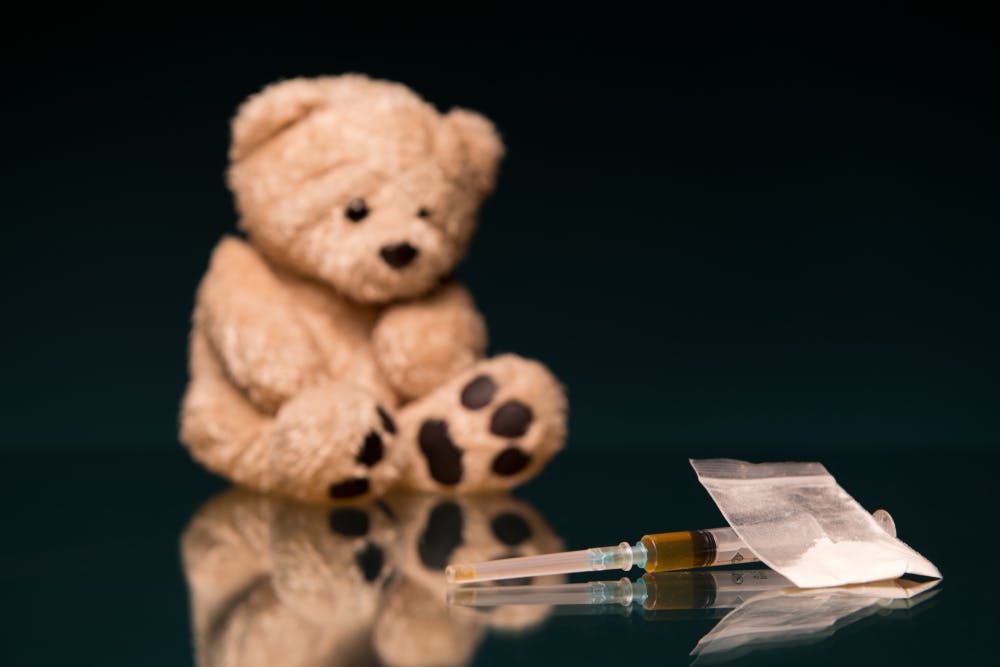“Cocaine Bear” is not just a fictional movie plot. It is based on a true story about a 500-pound black bear that ingested almost 75 pounds of cocaine in 1985, became aggressive and attacked hikers, and eventually died of a drug overdose.
While this story may seem bizarre, it raises important questions about how drugs affect animals and the potential dangers that come with it.
What Is Cocaine Bear? Is It a True Story?
Cocaine Bear isn’t just the name of the latest ridiculous horror-comedy movie plot at the box office. This true story is even stranger than fiction. In this blog post, we’ll discuss the wild world of a bear on a cocaine bender and explore whether animals can really feel the effects of drugs. We’ll also cover how to get help if you or a loved one are dealing with drug addiction.

What Is Cocaine Bear (The Movie Version)?
From director Elizabeth Banks and writer Jimmy Warden, 2023’s Cocaine Bear was adapted from the true story of the notorious “Cocaine Bear” that ingested nearly 75 pounds of lost cocaine. The movie stars Keri Russell, Alden Ehrenreich, O’Shea Jackson Jr., Isiah Whitlock Jr., Margo Martindale, Matthew Rhys, Jesse Tyler Ferguson, and Ray Liotta.
After the 500-pound black bear ingests a significant amount of cocaine and embarks on a drug-fueled rampage, an oddball group of cops, criminals, tourists, and teenagers converge in a Georgia forest. The group includes middle school student Dee Dee and her mother, Sari.
Dee Dee and her friend skip school one day to visit the forest. During their journey, they find a brick of cocaine and take a few pieces before they are attacked by the bear. As Sari and a park ranger search for Dee Dee’s friend in the forest, they find him hiding from the bear clinging to a tree.
In St. Louis, the drug dealers are making plans to recover their cocaine, and Daveed, the organization’s fixer, is sent to Georgia to fetch it. As Daveed arrives in the forest, the bear continues its deadly path of destruction.
Eventually, the bear kills most of the group in the forest. One of the survivors hitchhikes to New York with a duffel bag of cocaine from the forest. Daveed survives and reunites with his son in St. Louis.
What Is Cocaine Bear (The Real-Life Version)?
The back story of the Netflix movie starts in 1985 when narcotics officer turned drug smuggler Andrew Thornton was part of a drug smuggling ring that transported large shipments of cocaine from Colombia to the United States.
One night as he and two other men were flying a small plane from Colombia to Georgia to drop off their cargo, something went wrong. Thornton ended up falling out of the plane while wearing a parachute. He was carrying a duffel bag filled with 70 pounds of cocaine, which also fell out of the plane.
During the incident, Thornton’s bag of cocaine opened and scattered below in the Chattahoochee-Oconee National Forest. This is where an American black bear eventually found and ate some of the cocaine. The drug caused the bear to become extremely aggressive. It attacked two hikers, one of them fatally.
When the dead bear’s body was found, a necropsy revealed it had died from a cocaine overdose.
In December of 1985, the Georgia Bureau of Investigation announced that a 175-pound black bear had “died of an overdose of cocaine after discovering a batch of the drug. The New York Times headline read “Cocaine and a Dead Bear.”
Shortly after, the story of the Cocaine Bear became a media sensation and, eventually, a Hollywood sensation with countless movies and books made about the bear, who’s also referred to as “Pablo Eskobear.”
Today the bear is on display at the Kentucky Fun Mall in Lexington, Kentucky.
The medical examiner eventually concluded the bear absorbed between three to four grams of cocaine into its blood stream. Although it is possible that the bear ate more than that.
While the story of the “Cocaine Bear” is certainly unusual and tragic, it also highlights the dangers and consequences of cocaine use.
Can Bears Get High from Cocaine?
Because Cocaine Bear is based on a true story, many people were left wondering how drugs affect animals in real life. So, what would happen if a bear actually did cocaine?
According to research, animals can get high just like humans can. In fact, some animals intentionally seek out psychoactive drugs. Even dolphins have been found to seek out chemical intoxicants for the purpose of getting high. Their drug of choice under the sea? Pufferfish.
These fish produce a potent neurotoxin that, when released into the water, puts dolphins into a trance. Reindeer have also been documented seeking out psychedelic mushrooms and behaving strangely after consuming them.
Sadly, there are also negative consequences when animals use drugs — whether they do so on purpose or not. In fact, animals can become addicted to drugs and can even experience withdrawal symptoms when they stop taking the substance. Just like humans, drugs also impair animals’ judgment and lead to dangerous behavior. This is especially concerning for wild animals that may pose a risk to humans (like Cocaine Bear).
Keep in mind it’s extremely rare for wild animals to come into contact with any drugs, let alone $15 million worth of cocaine. Household pets may have easier access to drugs and other substances that are left around the house.
Whether you think a bear has ingested cocaine or not, it’s a wise idea to keep your distance and never approach them if you come across one in the wild.
Struggling With Cocaine Addiction? Zinnia Health Can Help
Are you or a loved one struggling with a drug addiction? Not sure where to turn? Zinnia Health can help. Contact us today to learn more about our comprehensive drug addiction treatment services and how we can help you achieve lasting recovery. Heal for good with Zinnia Health.

